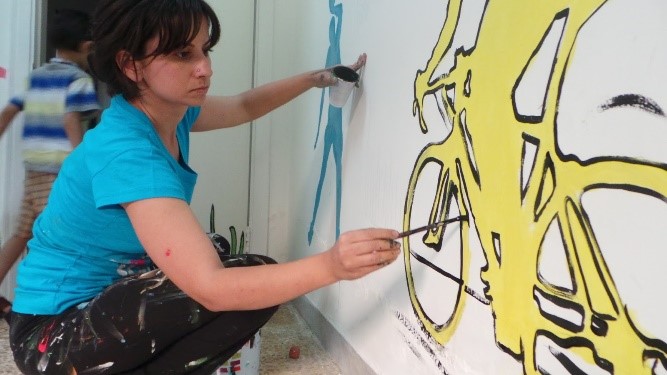
By Shelby Procko
All photos courtesy of (http://www.soulafabas.com)
Soulaf (Soully) Abas is an incredibly talented woman from Damascus, Syria. She began her life as an artist as a young child, doodling on anything that she could find the space. At 16 she began to take art more seriously by starting art classes at the Russian Cultural Center. She always knew it was something that she wanted to pursue seriously. In the 5th grade Syrian students begin to learn English, and when asked what she wanted to do when she grew up, Soully said she wanted to be a designer. “I didn’t know that a designer was different than an artist then, but I knew I wanted to do something with art, lots of colors, and a canvas,” she said, “I know it’s a cliché, but I never doubted that.”
As a third-year Art student at the University of Damascus, Soully found an advertisement for scholarships to study in America. The flyer offered funding for schools of Business, Science, Medicine, and Technology but nothing for Fine Arts. The scholarship was the equivalent of a Fulbright, which are merit based grants for international graduate students, but for undergraduates. Soully took the flyer, made copies, and posted them on the third floor, and told all the other students they should apply. “I thought if I could get enough people to respond, they would get the hint and extend the offer to Art students as well.” She said. And it worked. The interview process was a long and tedious one in which she had a series of phone interviews and wrote a total of nine essays related to her intended degree. When Soully found out that she had been selected to go to the United States, she received only about two weeks’ notice. “I was one of 8 students chosen from Syria and the only from my class,” she stated matter-of-factly with no trace of arrogance at being one of so few to be accepted. Soully was one out of 176 students selected from the Middle East, North Africa, and Southeast Asia that year.

Soully traveled to California for orientation, and her portfolio was sent out. The international students did not get to choose the universities they would attend, rather the program directors would pick them. After Indiana State University selected her portfolio she began to pursue her undergraduate in art. When she began her studies Soully painted everything, she was lacking a direction. One day in August, while sitting outside smoking and drinking tea, she noticed a cicada emerging from its husk. “We don’t have cicadas in Damascus, I was fascinated and watched it for several hours,” she said. After its wings had fully straightened out and dried, the cicada took off and flew right into a light, killing it instantly. She was in awe that something could have worked so hard and had such a short life. Soully ran over and picked it up; the following Monday she brought it to her art teacher Nancy and said with excitement, “I want to paint insects.”
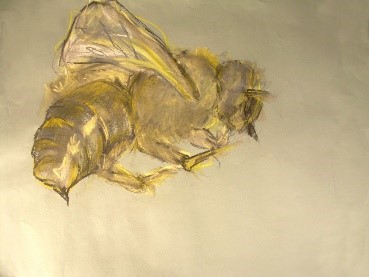
She collected and studied insects under a microscope at Nancy’s urging. She painted them in detail and on canvases 8×10 feet and larger. She wanted to focus on things that many might find insignificant and create a piece that begged for attention. Soully returned to the Middle East after graduating with her bachelor’s in Art. Instead of spending her time in Syria, she spent those two years going to symposiums and teaching art.
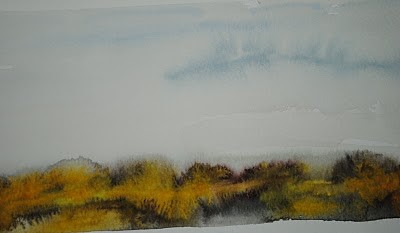
During her travels, Soully’s art transitioned from larger than life insects to landscapes. With everything in life around her changing the idea was to obtain and reshape memories. Even the landscape changes over time and the paintings would capture the images of them as they were.
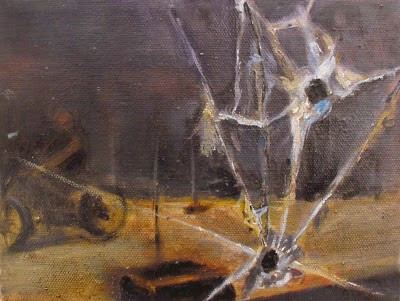
Soully returned to the U.S. after two years. Syria entered a civil war in 2011 and Soully made the decision to return home. However, she has not been back to Syria since that visit. Her uncle died not long after she arrived back in the United States. “It was September 5th, a Wednesday,” she said distantly recalling the memory. Painting became a way to deal with the pain, not just that of losing her uncle, but of all the things she had seen while back in the Middle East. Painting is an extraordinarily effective way to deal with pain, even more so than talking to someone about the pain. Soully explained that when a person has experienced trauma, they will lock it away in a section of their brain and when they recall the memory they relive the experience. Painting helps bring that memory to life, making it real and beginning the healing process. She speaks unemotionally about the civil war in Syria almost as though she does not care, but that is far from the truth. “Painting is the only way I could deal with the pain; sometimes I cry the entire time I paint,” she said.
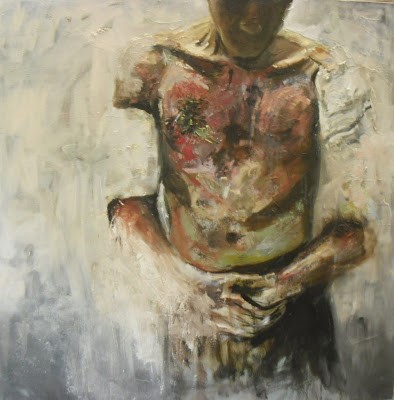
Now back in Indiana, Soully pursued art rehab and therapy and brought it to Ryves home for children. Many of the children were victims of abuse. They would discuss the pain of abuse and neglect, and talk through it. She also spoke to them about the Syrian children in Jordan who suffered the loss of their homes. This prompted her to initiate an art and letter exchange between the two groups of children, the displaced Syrian refugees and the discarded American children. The Ryves kids wrote letters and sent their art to the Syrian refugee children sympathizing with them over the loss, telling them that they were not forgotten. They also wrote of their own lives, dreams, and fears, to which the Syrian children wrote back. Soulaf has written a book, “Me and You,” about the interaction called. It is a self-published book made possible by a grant. 100% of the proceeds go to Syrian refugees to return to school. The $20,000 made so far has gone to 30 children, providing them with books, blankets, school supplies, food, and tuition.
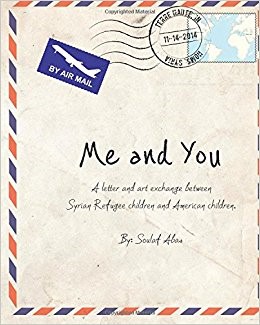
My art class had the pleasure of meeting this incredible woman and she shared with us many different stories. Many found her passion for life is inspiring. Although it isn’t just her life she is passionate about, her art draws attention to many things that would otherwise be forgotten. Most of the paintings, in Remains III, are oil paintings but Soully also paints watercolors and practices printmaking as well. Soully has an exhibit in the McKendree Art Gallery called Remains III, and it ends November 19th. It features Syrians in despair, landscapes, and homes that are full of destruction. “Some are pictures that I have seen in the news,” she said. “All of the places featured I have been too and some of the pictures I took in my travels.” Soully used pictures from the news to bring awareness to the suffering in Syria. “I wanted to bring to life the scenes and people that appear on the news and are so quickly forgotten.”
Soulaf’s paintings of insects, illustrating things that most people see as pests, demonstrate the beauty in the often overlooked. She has found the beauty in them and developed that beauty into stunning works of art. The landscapes that are meant to capture moments and reshape memories, and of course the scenes of pain and destruction in the civil war in Syria, captures subjects that everyone has seen but few pay attention to.
Soulaf now resides permanently in Indiana where she has taken up a position as Assistant Professor of Art at the Rose-Hulman Institute of Technology. She now plays an important role in one of the top ranks engineering schools in the country. While the art curator at Rose-Hulman had taught art classes from time to time, after retiring, students and parents requested that the classes be brought back and Soully was asked to fill the vacancy.